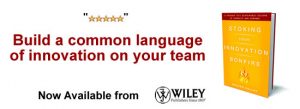Small and Nimble Also Key
 E.F. Shumacher wrote Small is Beautiful in 1973. Shumacher learned a lot about disruptive innovation from his prof Joseph Schumpeter. A lot of us that found advantages in smaller organizations have been quoting him for decades. Recent interest in promoting small business growth has spurred renewed interest in Shumacher’s work.
E.F. Shumacher wrote Small is Beautiful in 1973. Shumacher learned a lot about disruptive innovation from his prof Joseph Schumpeter. A lot of us that found advantages in smaller organizations have been quoting him for decades. Recent interest in promoting small business growth has spurred renewed interest in Shumacher’s work.
The Economist reviewed a Progressive Policy Institute report on scale and innovation where Michael Mandel drew a different conclusion, “today’s economy favours big companies over small ones.†Mandel points to three reasons:
1. The economy is driven by big ecosystems and they need to be managed by companies with scale and skill.
2. Globalization puts a premium on size and it often pays to be big enough to stand up to the nation state.
3. The most important challenges involve complex systems and serious change requires serious scale.
All three of these arguments are relevant to education and make the case for big innovation-focused learning companies like Pearson. Education is moving toward platform ecosystems that will orbit big partnerships. The ecosystems will include these ten elements:
- Standards-aligned libraries of open and proprietary content
- Social, collaborative, and productivity tools
- Assessment tools and achievement analytics
- Learner profiles and portfolios
- Smart recommendation engines
- Assignment and matriculation management tools
- Aligned student services: tutoring, guidance, health, youth & family services
- Aligned teacher services: professional development, lesson & tool sharing
- Aligned school services: implementation support, new school development, and school improvement
- Aligned systems: enrollment, finance, personnel, and facilities
While a couple big companies may provide the gravity for these ecosystems, the innovation around the edges will primarily come from small nimble organizations. Education will benefit from innovation from scaled capabilities like Pearson, McGraw, K12 and New York City as well as from start ups like Formative Learning, Straighter Line, Desmos, Class Dojo, and Junyo.
The Economist points to two objections to Mandel’s argument. First, big companies are “less comfortable with disruptive innovation.† It’s likely to be the case that the big players will focus on incremental innovations and that the really disruptive stuff will come from the edges.
And, second, the Economist suggests that progress tends to come from growth companies regardless of whether they are big or start small. No question that we’ll see more innovation from Edmodo than HMH.
Big companies and small companies each have some unique advantages. Big and clever organizations can address opportunities at scale and have the gravity to attract partners and shape markets. Small organizations can pinpoint innovations and shift nimbly from one opportunity to something better.
There is a big gap between the education opportunities we have and those our kids need. We’d do well to encourage investment and contribution from big and small organizations to fill the gap and support the schools we need.
image credit: .comweavers

Don’t miss an article (3,650+) – Subscribe to our RSS feed and join our Innovation Excellence group!
 Tom Vander Ark is CEO of Open Education Solutions and a partner in Learn Capital. He is a former public school superintendent and chairs the International Association for K-12 Online Learning. Author of Getting Smart: How Personal Digital Learning is Changing the World, Tom blogs daily at Getting Smart. Contact him at Tom@GettingSmart.com or follow @tvanderark on Twitter.
Tom Vander Ark is CEO of Open Education Solutions and a partner in Learn Capital. He is a former public school superintendent and chairs the International Association for K-12 Online Learning. Author of Getting Smart: How Personal Digital Learning is Changing the World, Tom blogs daily at Getting Smart. Contact him at Tom@GettingSmart.com or follow @tvanderark on Twitter.
NEVER MISS ANOTHER NEWSLETTER!
LATEST BLOGS
Starbucks and Big Tobacco
Back in the 1950’s smoking was glamorous, and just about everybody who was anybody smoked cigarettes. Then came the discovery, to the shock of millions, that sucking smoke into your lungs might not be good for you. Then came another revelation that one of the substances in tobacco, nicotine, which was used as a poison by the Egyptians during the times of the Great Pyramids, is addictive. People then began a mass exodus from the consumption of nicotine via inhaled smoke.
Read MoreWal-Mart Goes Green – What about your company?
With the price of gas above $3.00, some companies (and hopefully all) are beginning to look at the fuel efficiency of their fleets. Wal-Mart is the most public example of this with its trucking fleet. Its efforts include:
Read More


